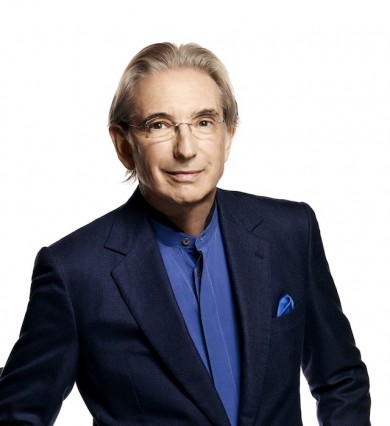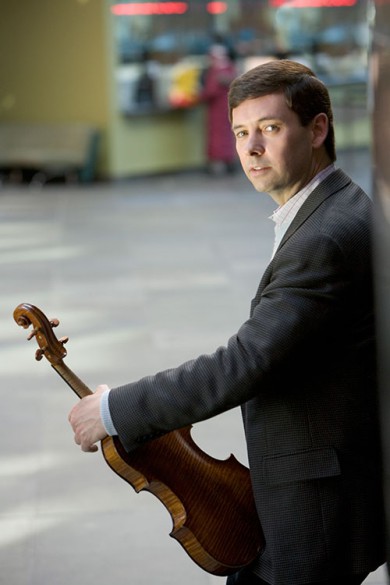New World closes season with majestic Sibelius and vibrant Berlioz

Michael Tilson Thomas conducted the New World Symphony Saturday night in music of Sibelius and Berlioz.
The New World Symphony opened its final weekend of season concerts Saturday, with a huge crowd gathered outside to watch the Wallcast from the lawn, indicating that this is one cultural institution that will be sorely missed over the summer.
The orchestra, which serves as a three-year transition to the professional music world for top conservatory graduates, typically turns over a third of its membership over the course of each year, as members go on to jobs with professional orchestras and other employment. A recent announcement of the plans of 18 members included jobs with the Atlanta Symphony, Houston Grand Opera, Houston Symphony, Auckland Philharmonic, Pittsburgh Symphony, San Francisco Symphony and Utah Symphony.
The concert opened with not one, but two, Sibelius symphonies. These were the Sixth and Seventh, the composer’s final two works in the genre before spending his last decades in musical silence in his country house outside Helsinki.
Packing two Sibelius symphonies into the first half may seem like an odd programming choice. But there were rewards to spending so much time in the Finnish composer’s sound world. One could savor the intimacy, the brassy bombast, the melodic invention, the characteristic use of woodwinds and other unmistakable aspects of his orchestration.
The Sixth begins and ends quietly, with the strains of violins. As directed by Tilson Thomas, the dynamic range was great, with outbursts of brass obliterating quiet moments, yet losing force as the music paled, weakened and grew fainter, for an overall sense of loss.
A sense of sunset and elegy also pervades the Seventh, although the departure is more extended and bitterly fought, more in the manner of Mahler. Although some performances draw out more agony from the brass lines that ascend and finally break, New World’s performance effectively conveyed the sense of struggle and hard-won peace with which the work ends.
Under artistic director Michael Tilson Thomas, the two symphonies both seemed surprisingly youthful, with the anthem-like passages coming off as more convincing than the bleak, Arctic, inward-looking ones. The contrasts between the two ends of the music was particularly marked, with the big brass chorales arriving with floor-shaking power.
The orchestra was in top form, with glowing tones coming from strings and woodwinds, and refined, resonant ones from the brass. The opening of the Sixth was particularly effective, as austere tones high in the violins swelled with the warmth of woodwinds and horns. In the quick third movement, the orchestra played the rhythmic theme with great precision, a whip-crack ensemble unity that sharply enhanced its effectiveness. In the final movement, after a climax in the full orchestra, the chorale-like tones of the violins return, and Tilson Thomas led a long and effective fade-out as the symphony quietly disappeared.
Before leading a performance of the Seventh Symphony, Tilson Thomas gave brief remarks in which he stated that for him the symphony was so deep and slow-moving that it sounded like “the emotional world of tectonic plates.” Throughout the performance of this single-movement work, there was a sense of deep undercurrents, as the music swelled to fortissimo and faded back. Strings and woodwinds played with affecting grace and lightness in quick passages that resolved into a dark mire of brass. Trombonist Nick Platoff gave a fine performance of the rising majestic theme, playing with weighted resonance and sensitivity.
To wind up its season, the orchestra brought in Roberto Díaz, president of the Curtis Institute of Music and former principal viola of the Philadelphia Orchestra, for a performance of Berlioz’s Harold in Italy. Díaz is a familiar face in South Florida, where he appears regularly on the Friends of Chamber Music of Miami series and serves as a New World coach.
As Berlioz tells the story, Harold in Italy, loosely based on a poem by Byron, was commissioned by the dazzling violin virtuoso Nicolò Paganini, who wanted a concerto with which to show off his newly acquired Stradivarius viola. When he saw the result, Paganini refused to play it, saying the solo part wasn’t sufficiently prominent.
Although Harold in Italy offers more musical excitement than any of the flashy but tedious concertos produced by Paganini himself, the great violinist was right that the work is not a true concerto. Aside from whether the viola gets enough playing time, there isn’t that sense of the solo instrument pitted against the orchestra that was characteristic of so many 19th-century concertos.
Díaz brought great individuality to the performance, yet played in a self-effacing manner that integrated his part into that of the orchestra in the manner of a colleague rather than a competitor. He provided texture and color, almost disappearing into the orchestra, when the brass took the melody. In his hands, the viola’s unique tonal qualities came through–dark and throaty in the lower register, plaintive and melancholy on top.
The soloist’s individuality showed in his playing of the opening theme, rendered with a throbbing vibrato, singing the music like a Verdi baritone; the second time Diaz played it in a whisper. In the arpeggios that accompanied the March of the Pilgrims theme, he rolled his bow across the strings in a grainy manner that cut through the orchestra incisively yet didn’t draw undue attention. And when the theme came back in octaves against the full orchestra, he brought a magnificent tone that married brilliantly with the sounds of the ensemble.
Berlioz’s light, transparent orchestration, with its sparely accompanied solos and section solos, was striking after the richness of Sibelius. From the ominous, chromatic meanderings with which the work opens to the light themes of the Italian countryside, New World gave a vivacious, richly colored performance. The Orgy of the Brigands theme came off with knife-edged precision, giving it an extra touch of menace and violence.
The New World Symphony will repeat the program 2 p.m. Sunday at New World Center in Miami Beach. nws.edu; 305-673-3331.
Posted in Performances
Leave a Comment
Sun May 8, 2016
at 12:45 pm
No Comments







